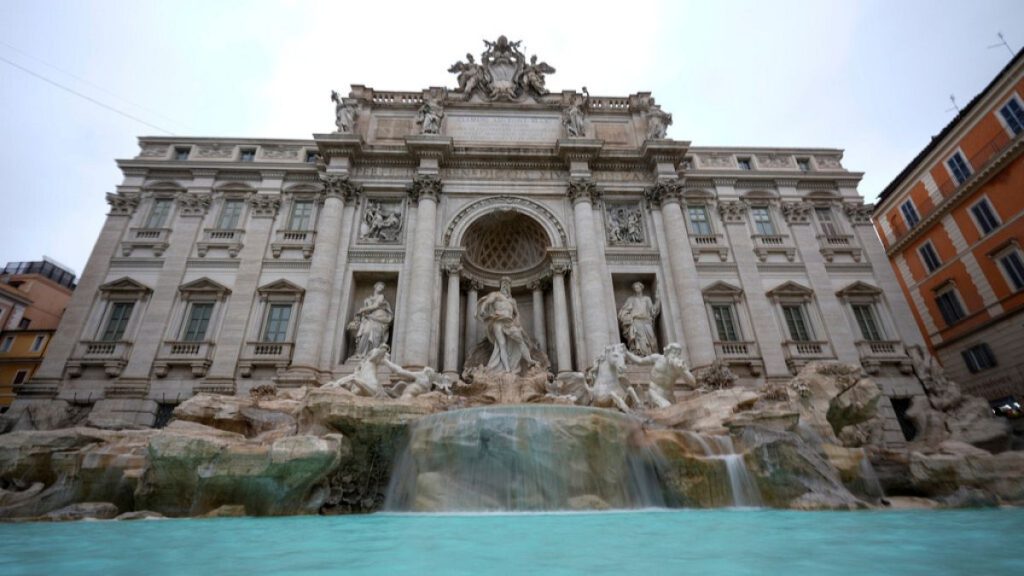The Trevi Fountain, a symbol of Rome’s artistic and historical heritage, has reopened its doors to the public after a three-month restoration project, just in time for the Vatican’s Jubilee Holy Year in 2025. This 18th-century masterpiece, nestled in a bustling pedestrian zone, draws millions of visitors annually, making it one of Rome’s most popular attractions. However, its central location and constant exposure to the elements contributed to its gradual deterioration, necessitating the €327,000 refurbishment. The restoration primarily focused on cleaning the fountain, removing accumulated dirt, iron oxide, and limescale, particularly in areas most affected by water contact. The project also included waterproofing the basin to protect it from future damage and ensure its longevity.
Recognizing the challenges posed by large crowds, Roman authorities implemented a new access system designed to enhance the visitor experience and prevent overcrowding. This system limits the number of visitors around the basin to 400 at a time, allowing for a more intimate and immersive interaction with the monument. Claudio Parisi Presicce, Rome’s superintendent for cultural heritage, emphasized the importance of this approach, stating that it aims to “re-establish a direct contact with the monument,” enabling visitors to fully appreciate the narrative embedded within this “monstrous, late-Baroque and proto-neoclassical monument.” The controlled access also allows staff to manage the flow of visitors and ensure a respectful atmosphere around the fountain.
The new system also introduces a nominal €2 entrance fee, granting visitors 30 minutes to admire the fountain’s intricate details and absorb its historical significance. This regulated access not only improves crowd management but also contributes to the fountain’s upkeep. Importantly, the beloved tradition of tossing coins into the fountain remains, with the proceeds, estimated at €1.5 million annually, continuing to benefit Caritas, a Catholic charity. This gesture, imbued with superstition and hope, adds another layer to the Trevi Fountain’s allure.
The fountain’s reopening coincides with the commencement of the Jubilee Holy Year, a significant event in the Catholic calendar, marked by forgiveness and celebration. Occurring every 25 to 50 years, this Jubilee is anticipated to draw millions of pilgrims to Rome. Pope Francis will officially inaugurate the Holy Year on Christmas Eve by opening the Holy Door of St. Peter’s Basilica, a symbolic gateway that will remain open for the entire year, inviting pilgrims to pass through as a sign of seeking redemption.
The Jubilee offers observing Catholics an opportunity to receive “indulgences,” or forgiveness for their sins, by participating in various religious practices. These include attending Masses and other sacraments at the four papal basilicas in Rome or other designated Jubilee sites, as well as engaging in acts of charity, mercy, penance, and abstention. The Vatican anticipates a significant influx of pilgrims, estimated at 38 million, traveling to Rome to partake in this sacred event. The last extraordinary Jubilee, held in 2016, also drew large crowds, underscoring the importance of this event for the Catholic faith.
The restoration of the Trevi Fountain and the commencement of the Jubilee Holy Year represent a confluence of historical preservation and religious observance in Rome. The revitalized fountain stands as a testament to the city’s commitment to safeguarding its cultural treasures, while the Jubilee offers a period of spiritual reflection and renewal for Catholics worldwide. Both events are expected to draw significant crowds, highlighting Rome’s enduring appeal as a center of art, history, and faith. The careful planning and implementation of the new access system at the Trevi Fountain underscores the city’s commitment to balancing tourism with preservation, ensuring that this iconic landmark remains accessible and enjoyable for generations to come.

